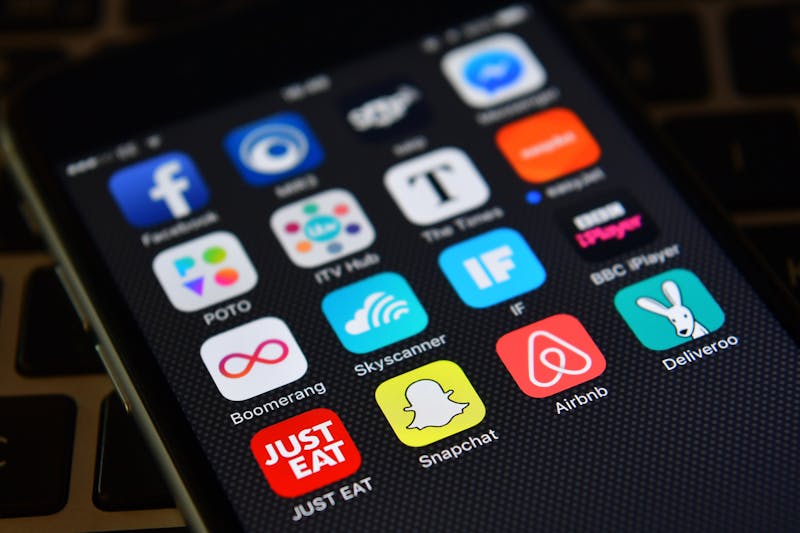This week Fast Company promised news of “calm interfaces,” about a researcher at MIT who has created “programmable droplets for interaction.” It turns out this is a way to choreograph drops of liquid on a grid, with the potential to change the way people communicate with one another. The droplets are awfully nice, but I think most people clicking on that link were hoping for something else.
Still, the story made me suddenly aware of a terrible need. The mere suggestion of a “calm interface” points out, by contrast, the busyness of our dominant interfaces: their horrid colorways, their recursive, maddening, rectangle-within-rectangle structure. In the bait-and-switch of a misleading headline, I woke up to the fact that I was spending most of my waking hours inside something ugly.
It is nothing new to observe that social media and personal devices are structured in a way that engineers panic and obsession. In February, the internet’s resident critic John Herrman wrote about the tyranny of the red dot. The dots “alert us to things that need to be checked: unread messages; new activities; pending software updates; announcements; unresolved problems.” But their effect is deleterious to the mind. As the dots have spread, “they’ve become a rare commonality in the products that we—and the remorseful technologists—are so worried about. If not the culprits, the dots are at least accessories to most of the supposed crimes of addictive app design.” The dot can signify anything: a death in the family, a work obligation, a miniscule update to an application.
But what of the way it looks—the redness and dotness of the red dot? For the red dot is very, very ugly. The shade signifies urgency, almost emergency. Red belongs on insects and Ferraris. This type of red is acceptable on an Italian chair molded in plastic. It looks great on human lips. But bright red is an accent color and it works best in a minimal context: against a white studio interior, a flash along the black tarmac, next to low-key eye makeup. In 2014 it was vogue to wear bright red and bright pink together, but that went out, carried on a Marc Jacobs breeze, almost as soon as it came.
To separate the function of the red dot and its visual character is not so easy. Because it is a nonverbal symbol, the dot prompts a response that itself is not verbal. It’s more like a feeling, a rush of energy towards the dot and a desire to obliterate it. But its shape and shade, combined with its proliferation, produce something else: a mess.
Home screens are customizable. I keep my apps tucked away in folders. I keep my laptop screen totally blank, or with some little shape made of folders in its middle—a little riposte to the very idea of workspace clutter. (My actual desk heaves with objects.)

But because work takes us away from our customized digital residences and into the broader galaxy of the internet, it is simply not possible to maintain a truly minimal visual journey throughout one’s day. At the bare minimum, my MacBook Air is a horizontal series of five Chrome tabs, including a Google Drive document, a Slack window, one tab each for work and personal Gmail accounts, and one Twitter tab. At the moment there is also a window with the Google search for “why does computer look like this”: impulse fulfilment borne of behavioral conditioning.
Each of these elements is, to my eye, a speck of pollen. I like Helvetica as much as the next nerd, but I like it on subway signs—not spackled across Twitter’s ugly bones in a thin patina of design cred. Likewise, rectangles are perfectly fine shapes. I would not design a universe based on them, however, stacked beside and on top of each other like some hell constructed of Lego forms. Blue is a nice color, but I would not paint my whole world the sickly pale blue of iMessage, the App Store, Microsoft Word, Twitter (again), and Google Docs. Green is nice, but not in the bilious avatars of Excel and FaceTime and Google Sheets. The overall effect of these reds and blues and greens, all pitted against a range of grays that signal “internet-neutral,” is discomfiting in the extreme.
Like the laws of physics, we take for granted the design of our devices and the worlds they depict because we assume that they are beyond our understanding and control. This particular icon and my phone’s navigation system and the entire internet look like this because they must, because the interface experts have deemed it so, through research, or something. Just as gravity is, so is the grisly Mac trash-can icon.
All day we labor in a place filled with a sans-serif that insults the design heritage of sans-serif. The “flat” trend governing the internet today has done well to eliminate the strange shadows of the skeuomorphic paradigm—in which the online world tried to mimic the look and feel of the real world—but it also gives us a dimensionless experience akin to shuffling through a deck of cards. I’m so bored of the way the digital world looks that I’m starting to actually notice it. The worst part is the praise Apple rakes in for the supposed loveliness of its devices. It is true that they have perfected the art of black rectangles. But those rectangles’ contents are very bad.
Is this coming to consciousness? We are in the mature phase of internet critique, to which the Herrman oeuvre and the solid new “Future” section of The Outline attest. Understanding the way our digital environments work can feel like a heavy burden for people who don’t work in tech. But responding to the way things look is an experience shared by most people. We have been slower to realize how bad the situation has become because we are invested, horcrux-like, inside the very objects that we should be criticizing. It is hard to see clearly a system that has grown slowly, incrementally, around you.
One day I believe there will exist a relationship between user and product that is as conscious, calm, and elegant as the red Italian chair in its felicitous studio. For now I’m just surprised that things aren’t better. These aren’t the laws of physics we are dealing with. Perhaps everything actually looks fine, and I’m in the throes of some new pavlovian response conditioned by a hatred for digital life. Maybe I’m just trying to bolt some “critical” argument over that feeling, when the problem is me. Either way we will march on miserably until change comes, living inside the spinning wheel that has become frustration’s very metonym.
